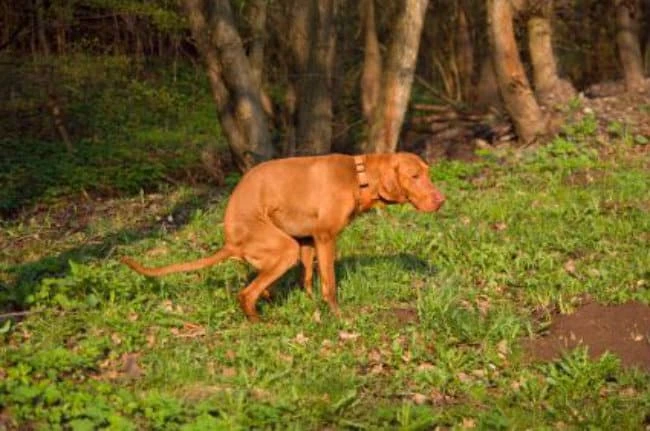Dog Owners Guide To A Dogs Anal Glands

Your dogs anal glands are actually ‘sacs’ or ‘pouches’ which are located on either side of the rectum – if you are looking at the dog’s rectum the anal glands appear in the 5’0 clock position on the right side and at the 7’0 clock position on the left side. Each gland (there are two) is filled with a pretty foul smelling liquid that the dog will use to mark his or her territory. It is also why your beloved pet sniffs the behind of other dogs (this enables them to correctly identify friends and strangers).
Each time a dog poops the anal glands will release some of the foul smelling liquid – however sometimes when your pet defecates they do not release any liquid form the glands or the liquid builds up to a level where the dogs anal glands are too full. When this happens it is common to see your pooch rubbing their bottom along the floor (sledging) or attempting to lick their rectum – the glands can also feel uncomfortable or itchy when they are too full. Other symptoms can include the affected pooch chasing his tail or even appearing in pain due to the inflammation. Although any breed can be affected with blocked glands it seems to be more common in smaller miniature breeds.
It is worth mentioning that most dogs do not have a problem with blocked glands as when they attempt to poop the rectum expands causing the gland to naturally express the liquid inside. If the liquid is allowed to remain in the glands then it can cause problems i.e. become infected. However when a dogs anal glands are not naturally expressing themselves then the vet may need to express them manually.
Should I speak to a vet?
The simple answer to this is a resounding yes – however if you are a very experienced owner or breeder it may be possible for you to empty the glands yourself (you should still speak to the vet as you may inadvertently injure the glands causing more problems). If the dog is in pain when this is attempted the vet should be called.
If you are an experienced owner and breeder and your vet is happy for you to attempt to empty your dogs anal glands then the quick guide below should help…
1. Always place your dog on some old newspaper or in the shower or bath (the liquid that is released is pretty nasty and you don’t want it on your carpet).
2. Now put on some latex gloves (you don’t want this liquid all over your hands and you don’t want to pass any infection to your dog either). Make sure that you have some warm water and some cleaning material – this will enable you to clean the area and your dog as you release the liquid.
3. Now you need to get on to your knees behind your pooch and gently lift your dog’s tail. Use your left or right hand and hold a clean cloth in the hand that is free (this will catch the liquid as it escapes – you should lean to one side as you don’t want the liquid to land in your face).
4. If both of the glands are full they will be about the size of a small pea. Now with one hand holding the tail use the two fingers on the other hand to very gently press inwards on the glands (remember at the 5’0 clock and 7’0 clock positions that we discussed earlier) and the liquid should start to discharge.
If your dogs anal glands are at all painful or discharge blood, a black substance or any pus then you should speak to your vet straight away. Also if the glands are getting too clogged up on a regular basis then the vet may decide to surgically remove them but this is a last resort.
How to prevent anal gland problems
There are numerous ways that you can reduce the chances of your dogs anal glands from clogging up or blocking including…
1. Feed your dog a healthy diet – if you feed your pooch table scraps or give in to his or her begging demands then the glands have more chance of getting blocked. This is because the feces may be softer or loose which will not put enough pressure (during the act of defecation) on the rectum to enable the glands to be emptied.
2. Make sure that your dog has enough fibre in his or her diet – this works in the same way as with humans i.e. the stools will become more bulky and less soft (adding porridge oats to the diet may help).
3. If you are looking for a more natural alternative to unblocking the glands then you could use supplements – some homeopaths recommend adding Silica, 30c to the dog’s diet for a few days (up to a week). However, you should speak with the vet first before you make any changes to your dog’s diet.
Dog Health Problems Online > Dog Anal Glands





